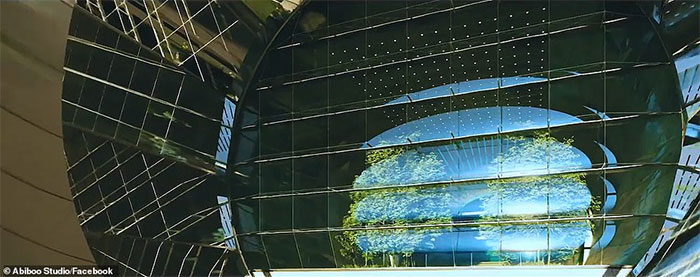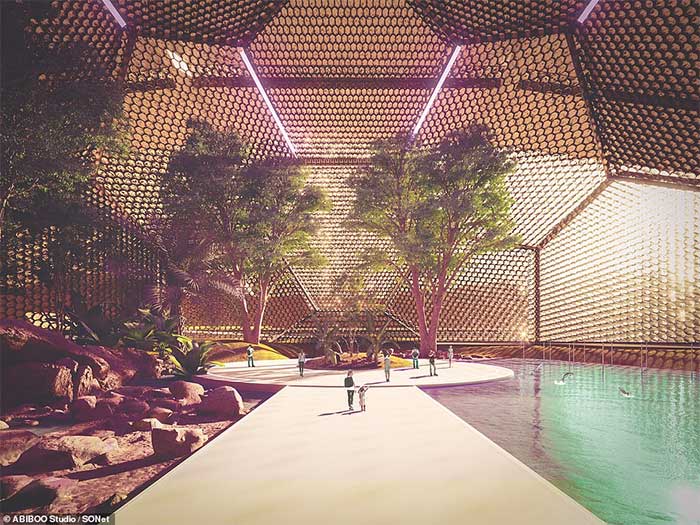Revealing the first city on Mars, with enough space for more than 250,000 people to live
As humans continue to explore Mars, plans to build sustainable cities on the Red Planet have emerged. Architectural design firm ABIBOO has proposed building a modern city on Mars, with enough space for 250,000 people.
Nüwa - the first and largest human city on Mars, could be built vertically along a cliff instead of horizontally, reducing the effects of atmospheric pressure and radiation that are harmful to humans, according to the Daily Mail.
Fortunately, CO2 and water can be synthesized on the surface of the Red Planet. This is what architectural design firm ABIBOO wants to use to create steel and build a major city out of the materials on Mars.

Architectural design firm ABIBOO proposes to build a sustainable city solution on Mars.
The city would still include all the pillars of a city on Earth, including housing, offices and green space. The designs for the space are based on scientific research from The Mars Society and the SONet network.
"We had to do a lot of computer analysis and work with scientists to try to understand the circumstances we will face on Mars," Alfredo Muñoz, founder of ABIBOO, told Euronews.

The first city on Mars has room for 250,000 people.
However, the first city on Mars will not serve today's people, but perhaps their descendants, if all goes well. According to the plan, construction could begin in 2054 and people could move in by 2100.
The city is estimated to have room for 250,000 people. The city's name is taken from Nüwa , the patron goddess of humans in Chinese mythology.

Building a city on Mars is a huge challenge.
Computer-generated renderings show "Green-Domes" that serve as green parks for residents and where researchers grow experimental vegetation.
The city's main food source will come from farming, which is estimated to account for about half of the population's diet. Microalgae will also be an important part of the Martian diet.

Urban agricultural plant growing modules.
For recreation, people can engage in many of the same activities they do on Earth, from sports to camping to arts and crafts.
The long journey from Earth to Mars would be a huge challenge for anyone who wants to move to the Red Planet. But it's not impossible.

The city has a unique design to adapt to the harsh conditions on Mars.
The spacecraft departs regularly between Earth and Mars every 26 months. Each trip is estimated to last between 1-3 months.
The cost of buying a one-way ticket to Mars is estimated to be very expensive, around 300,000 USD.
- UAE's future Mars City on Earth
- City projects on Mars are about to be built
- Selected 100 people to Mars, live and do not return
- Going to bring hundreds of thousands of people to live in Mars?
- Humans can only survive 68 days on Mars
- Start selling 'one-way tickets to Mars'
- Should humans abandon the Earth and find another planet to live on?
- Is it possible to do 'that' on Mars?
- More than 1000 people volunteered to live Mars
- SpaceX revealed plans to build a city on Mars
- Simulate life on Mars
- Live in Mars to challenge yourself
 Announced 3 houses on the Moon and Mars
Announced 3 houses on the Moon and Mars Science proves: Mars also knows 'deflated'
Science proves: Mars also knows 'deflated' Elon Musk announced the price for a Mars trip was 11.6 billion VND, free of charge
Elon Musk announced the price for a Mars trip was 11.6 billion VND, free of charge NASA discovered strange 'gate' on Mars, is the hiding place found?
NASA discovered strange 'gate' on Mars, is the hiding place found?